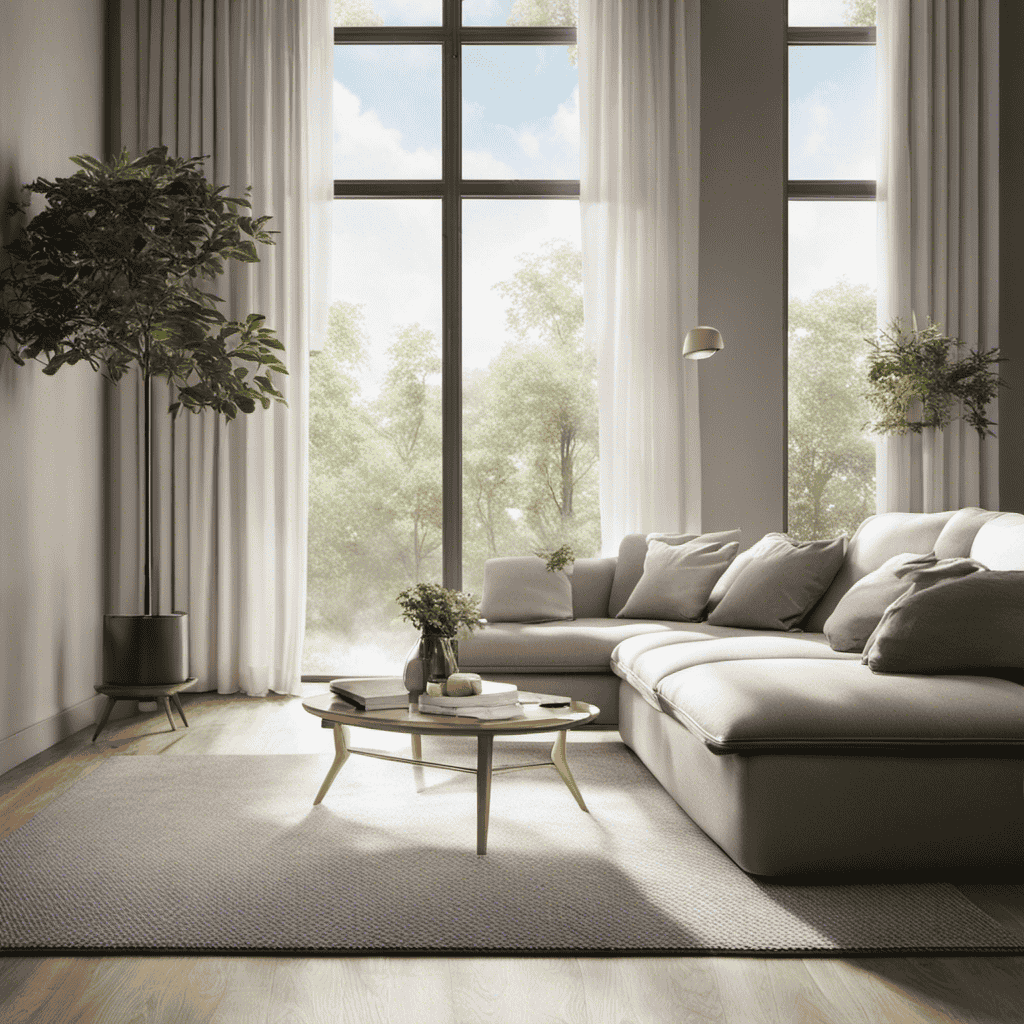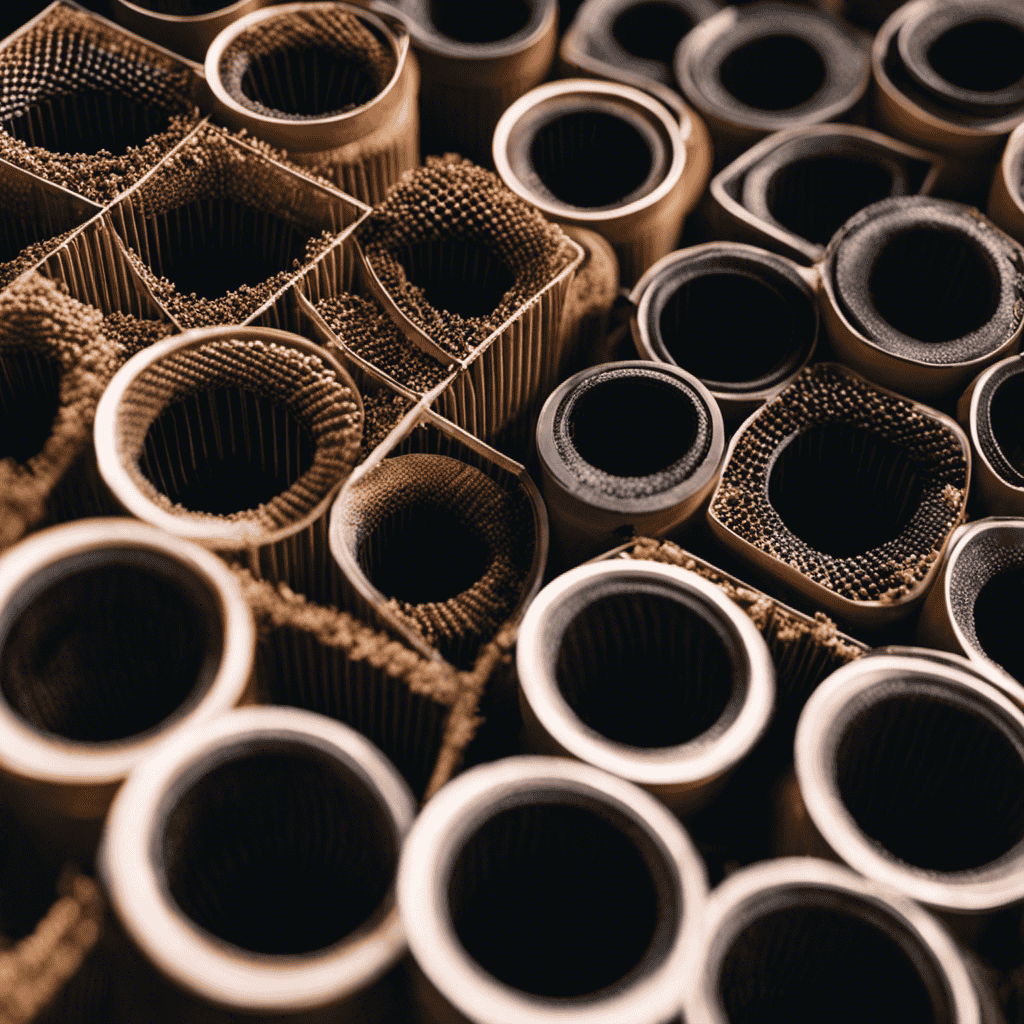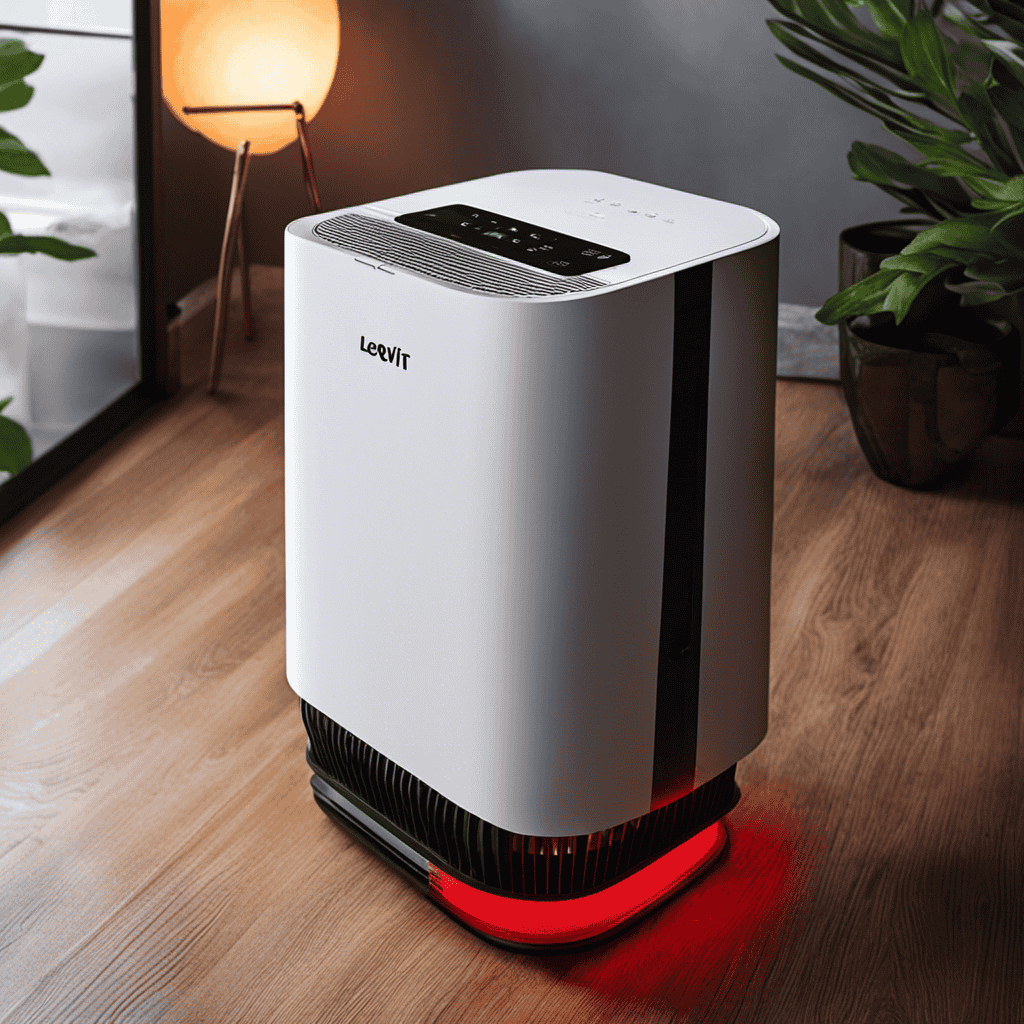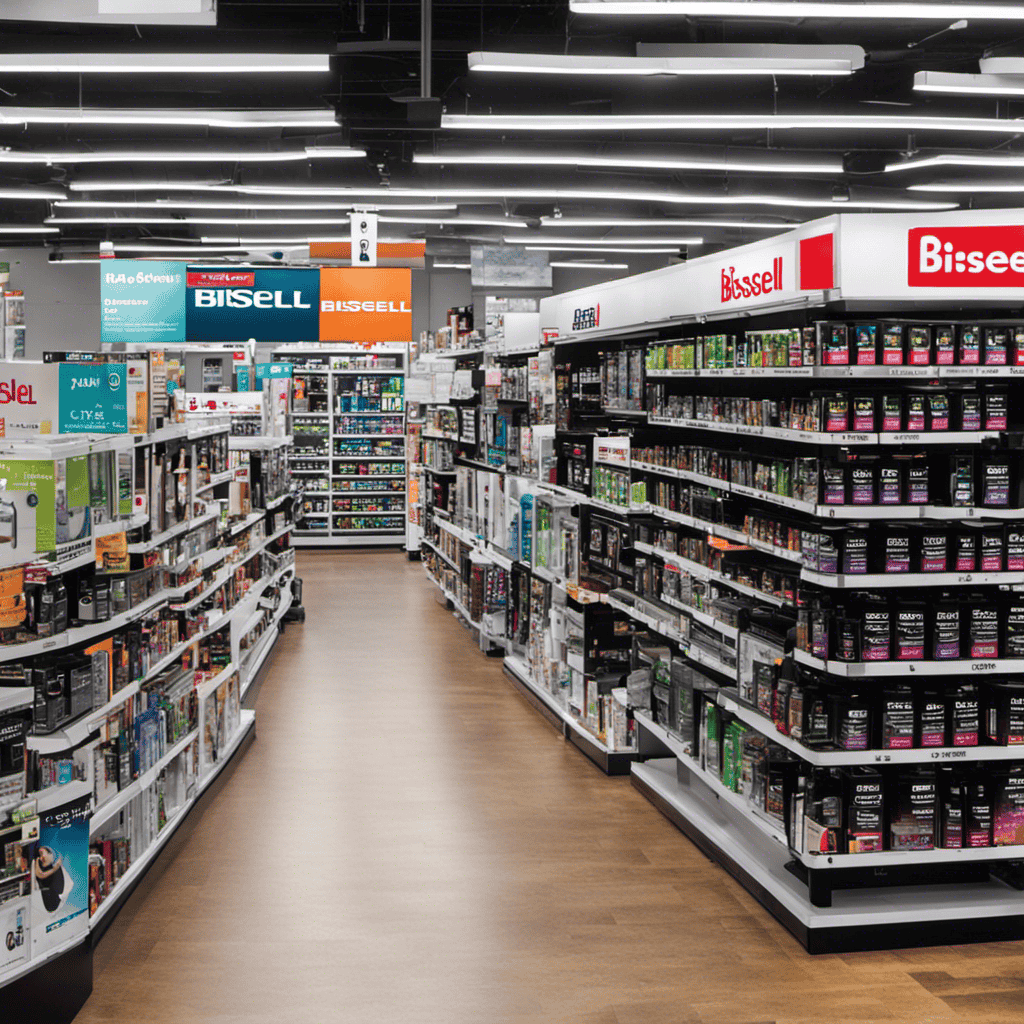I understand your curiosity about what the ionizer does in an air purifier. Allow me to explain it to you.
An ionizer is a key component in air purification systems that actively removes harmful particles from the air. It works by releasing negatively charged ions that attach to positively charged particles, causing them to become too heavy to remain airborne.
In this article, we will explore the science behind ionization in air purifiers, debunk common misconceptions, and provide insights on choosing the right air purifier with an ionizer.
So, let’s dive in and demystify the role of ionizers in air purification.
Key Takeaways
- Ionizers release negatively charged ions into the air, which attach to positively charged particles and cause them to become heavy and fall to the ground or stick to surfaces.
- Ionizers can effectively remove pollutants like dust, pollen, and smoke particles, improving air quality by reducing their presence.
- However, ionizers can also produce ozone as a byproduct, which can be harmful to human health if inhaled in high concentrations.
- Regular cleaning and maintenance of the ionizer, proper ventilation, and following manufacturer’s instructions are important for optimal performance and safety.
How Does an Ionizer Work in an Air Purifier
An ionizer in an air purifier releases negatively charged ions to neutralize pollutants in the air. This process, known as ionization, is believed to be effective in removing various types of pollutants, such as dust, pollen, and smoke particles.
When the negatively charged ions come into contact with these pollutants, they attach to them, causing them to become heavy and fall to the ground or stick to surfaces. This helps to clean the air and reduce the presence of harmful particles.
However, it is important to note that ionizers can produce ozone as a byproduct, which can be a potential risk to human health. High levels of ozone can irritate the respiratory system and worsen existing conditions such as asthma.
Therefore, it is crucial to consider the potential risks and ensure proper ventilation when using ionizers in air purifiers.
Benefits of Using an Ionizer in an Air Purifier
One of the benefits of using an ionizer in an air purifier is that it helps remove harmful particles from the surrounding environment. An ionizer works by releasing negatively charged ions into the air, which attach themselves to positively charged particles like dust, pollen, and smoke. This causes the particles to become heavy and fall to the ground or stick to nearby surfaces, effectively removing them from the air you breathe.
However, it is important to note that there are some potential negative effects and safety concerns associated with ionizers. Some studies suggest that high levels of negative ions in the air can lead to respiratory problems or exacerbate existing conditions like asthma. Additionally, some ionizers produce ozone as a byproduct, which can be harmful when inhaled in high concentrations.
Therefore, it is crucial to use ionizers in moderation and choose air purifiers that have safety features to minimize these risks.
Understanding the Role of Ionizers in Air Purification
To better understand how ionizers contribute to purifying the air, you should familiarize yourself with their role in removing harmful particles. Ionizers are an essential component of air purifiers as they help to improve the overall air quality by eliminating pollutants through the process of ionization. Here are three key aspects to consider regarding ionizers in air purification:
-
Ionizer maintenance: Regular cleaning and maintenance of the ionizer are necessary to ensure its optimal performance. This includes cleaning the ionizer plates or needles to remove any accumulated dust or debris. It is also important to follow the manufacturer’s instructions for maintenance and replacement of filters.
-
Ionizer safety precautions: While ionizers are generally safe to use, it is essential to exercise caution. Avoid touching the ionizer’s needles or plates as they may cause injury. Additionally, ensure proper ventilation in the room to prevent excessive ionization, which can lead to respiratory discomfort.
-
Effectiveness of ionizers: Ionizers work by releasing negatively charged ions into the air, which attach to positively charged pollutants, causing them to settle down or be attracted to a collector plate. However, it is important to note that ionizers may not be as effective in removing larger particles or gaseous pollutants.
The Science Behind Ionization in Air Purifiers
Understanding the science behind ionization in air purifiers is crucial for comprehending how they improve air quality. Ionization is the process by which air purifiers release negative ions into the air. These negative ions attach themselves to airborne particles such as dust, pollen, and bacteria, causing them to become heavier and fall to the ground or get trapped in the air purifier’s filters. This process effectively removes these harmful particles from the air, resulting in improved air quality.
To illustrate the impact of negative ions on air quality improvement, let’s take a look at the table below:
| Air Quality Before Ionization | Air Quality After Ionization |
|---|---|
| High levels of pollutants | Reduced levels of pollutants |
| Poor indoor air circulation | Improved indoor air circulation |
| Allergens present | Decreased presence of allergens |
As you can see, ionization plays a vital role in enhancing air quality by reducing pollutants, improving air circulation, and decreasing the presence of allergens. It is this scientific process that makes air purifiers an effective tool for creating a healthier indoor environment.
Common Misconceptions About Ionizers in Air Purifiers
Contrary to popular belief, ionizers in air purifiers don’t actually produce ozone. This is one of the common misconceptions that surround the use of ionizers in air purifiers. It is important to debunk these misconceptions and understand the true function of ionizers.
Here are three misconceptions about ionizers in air purifiers:
-
Ionizers produce harmful ozone: While some ionizers may produce a small amount of ozone as a byproduct, most modern ionizers are designed to minimize ozone production. They work by emitting negatively charged ions that attach to airborne particles, making them heavy and causing them to fall out of the air.
-
Ionizers remove all pollutants: Ionizers are effective at removing certain types of pollutants, such as dust and allergens. However, they may not be as effective at removing chemical pollutants or odors. It is important to choose an air purifier that combines ionization with other filtration technologies for comprehensive air cleaning.
-
Ionizers are harmful to health: When used properly, ionizers are not harmful to health. They can actually help improve indoor air quality by reducing the concentration of airborne particles. However, it is important to follow the manufacturer’s instructions and avoid excessive ionization, as this can lead to increased ozone production.
Factors to Consider When Choosing an Air Purifier With an Ionizer
When it comes to ionizers in air purifiers, understanding their effectiveness is crucial for making an informed decision.
In this discussion, I will explain how ionizers work to clean the air by emitting charged particles that attach to pollutants and remove them from the air.
Additionally, I will delve into the health benefits that ionizers can provide, such as reducing allergens, eliminating odors, and improving overall air quality.
Ionizer Effectiveness Explained
If you’re considering using an ionizer in your air purifier, you’ll want to know how effective it is at improving air quality. An ionizer works by releasing negatively charged ions into the air, which attach to airborne particles, making them heavier and causing them to fall to the ground, where they can be easily cleaned up. Here are some important points to consider regarding ionizer effectiveness:
-
Ionizer safety concerns: While ionizers can be effective at reducing airborne particles, they also produce small amounts of ozone, which can be harmful in high concentrations. It’s important to choose an air purifier with an ionizer that meets industry safety standards and is certified ozone-safe.
-
Ionizer maintenance tips: To ensure optimal performance, it’s essential to clean the ionizer regularly as instructed in the user manual. This typically involves removing the ionizing wires or plates and cleaning them with a soft brush or cloth.
Overall, using an ionizer in your air purifier can be an effective way to improve air quality, but it’s important to follow safety guidelines and maintain the ionizer properly to ensure its continued effectiveness.
Transition: Now that we’ve discussed the effectiveness of ionizers in improving air quality, let’s explore the health benefits they can provide.
Health Benefits of Ionizers
Now that we’ve covered the effectiveness of ionizers, let’s delve into the health benefits they offer. Air ionizers, powered by advanced ionizer technology, provide numerous advantages for improving indoor air quality. By releasing negative ions into the air, these devices can effectively remove harmful pollutants and allergens, creating a healthier environment. The table below highlights some of the key health benefits provided by air ionizers:
| Health Benefits | Description |
|---|---|
| Reduced Allergens | Ionizers help eliminate allergens such as dust, pollen, and pet dander, relieving allergy symptoms. |
| Improved Respiratory | By removing airborne particles, ionizers can enhance respiratory health and reduce breathing difficulties. |
| Odor Elimination | Ionizers neutralize unpleasant odors, leaving the air fresh and clean, making the environment more pleasant. |
With these health benefits, air ionizers play a crucial role in maintaining a healthy and comfortable indoor environment. They are especially beneficial for individuals with respiratory conditions or allergies, providing relief and improving overall well-being. By investing in an air purifier with ionizer technology, you can enjoy cleaner air and better health.
Frequently Asked Questions
Are Ionizers Safe to Use in Air Purifiers?
I’ll discuss the safety of using ionizers in air purifiers. Ionizers can effectively remove harmful particles, but they also generate ozone, which can be harmful in high concentrations. So, there are pros and cons to consider.
Can Ionizers Remove All Types of Indoor Air Pollutants?
Ionizers can effectively reduce indoor pollutants, but they may not remove all types. It’s important to note that they can have potential side effects. According to recent studies, ionizers have been found to decrease airborne particles by up to 95%.
Do Ionizers Produce Ozone?
Ionizers in air purifiers are efficient in removing indoor air pollutants. They provide numerous benefits such as reducing allergens and neutralizing odors. However, it’s important to note that some ionizers may produce ozone, which can be harmful in high concentrations.
Can an Air Purifier With an Ionizer Help With Allergies?
Can an air purifier with an ionizer really help with allergies? The effectiveness of air purifiers depends on various factors, but ionizers can potentially benefit allergy sufferers by removing airborne particles and reducing allergens in the air.
How Often Should the Ionizer in an Air Purifier Be Cleaned or Replaced?
The ionizer in an air purifier should be cleaned or replaced regularly to ensure optimal performance. Cleaning frequency depends on usage and air quality. Proper maintenance tips can be found in the user manual.
How Does the Ionizer in an Air Purifier 600 Affect Filtration on Low Setting?
When the Ionizer in an Air Purifier 600 is on a low setting, it can still significantly improve the filtration of air purifier. By emitting negative ions, the ionizer can help to trap pollutants and particles in the air, enhancing the overall efficiency of the air purifier’s filtration system.
Conclusion
In conclusion, the ionizer in an air purifier is a powerful tool that enhances the overall air purification process. It works by releasing negatively charged ions into the air, which attach to and neutralize harmful particles, such as allergens and pollutants. This process effectively removes these pollutants from the air, providing cleaner and healthier indoor environments.
Think of the ionizer as a superhero, swooping in to save the day by eliminating the villains in our air. Its role is crucial in ensuring the air we breathe is safe and fresh. Don’t underestimate the power of the ionizer in your air purifier!










